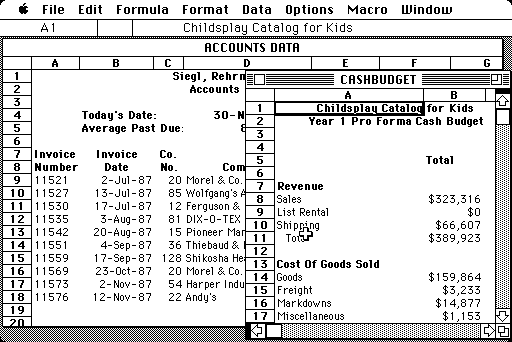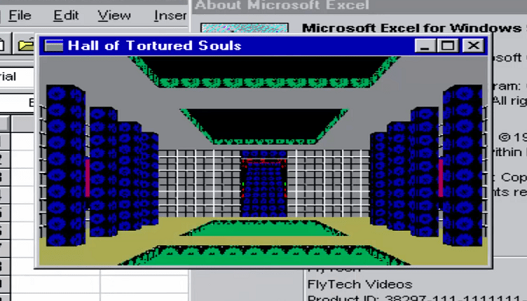

Most CT Grid users, if asked which software they use the most, would probably not mention Microsoft Excel. "Yes, obviously, I use Excel all the time - I did not bring it up since it is, well, obvious". Excel is the tap water and sliced bread of computing: ubiquitous, the tool of choice for an insanely wide range of applications and industries, sometimes misused, usually irreplaceable. Basically the greatest software success story of all times.
Such a large market - Excel is said to have over 750 million users worldwide - is not won overnight, and Excel is also one of the oldest applications still in use today. The first version of Microsoft Excel was published in 1985. The real history of the idea started even earlier. The very first spreadsheet program - VisiCalc - was invented in 1978 and released in 1979. Modern Excel has hundreds of features not present in VisiCalc, but the main concepts - the A1 cell naming convention, numbers, and automatically recalculated formulas - were already there. The main VisiCalc platform was Apple II, the first popular personal computer in the world, and VisiCalc was one of the main drivers of this success. The magic of a spreadsheet, where you could change one number and have the entire table recalculated immediately was so appealing that many users purchased their first Apple II computer just to use VisiCalc. In the language of the time it was Apple II's "killer application".
A few years later history repeated itself. The most popular personal computer was, this time, IBM PC, and its killer application was a spreadsheet program developed specially for it: Lotus 1-2-3, released in 1983. It was the Excel of its times. Even now we can still see echoes of its past fame. The Advanced page in Excel Options includes "Lotus compatibility" section to this day.
Microsoft tried to compete with both VisiCalc and Lotus 1-2-3 offering Multiplan application, released in 1982. It is long time forgotten, but it introduced an alternative notation for rows and columns: R1C1 instead of A1. This notation is available in Excel as an option and still in widespread use today.
Then Microsoft tried again, starting from scratch. The result was Excel, released in 1985. This is what it looked like back then:

No, you are not mistaken, there is an apple in the corner. Excel was originally developed for the Apple Macintosh. Microsoft decided that it has no chance competing directly with Lotus 1-2-3, which was the most popular DOS application at the time. Macintosh had been introduced just one year earlier as a revolutionary product, including the first affordable Graphical User Interface with windows controlled by a mouse. Lotus 1-2-3 had no Mac version, so it was a natural entry point for Microsoft.
While 1-2-3 was dominating DOS, Microsoft was busy developing its own GUI package for the IBM PC, familiarly named Windows. They ported Excel from Macintosh to Windows in 1987, but Windows itself still needed some years to mature. Finally in 1990 Windows 3.0 was published and was an enormous success. Excel was obviously available for it and universally praised for its user interface and functionality. It was clear that the future of personal computing lay in GUIs. Lotus' specialty was DOS; and they were too late in the Windows game with no experience in this radically different development paradigm. Throughout the 90s Excel was gaining popularity and 1-2-3 was losing ground, and the rest, as they say, is history. Excel is now the de facto spreadsheet application of choice
In subsequent versions more and more features had been added to Excel. Some were removed soon after their secret introduction: many people heard of flight simulator which was an easter egg added in Excel 97. You could play the game without leaving the spreadsheet program. A lesser known easter egg was added in Excel 95: "Hall of Tortured Souls", which was a Doom-like game:

These, together with many other easter eggs appearing over the decades of Excel history, are now gone. Though maybe the decision of removing The Hall of Tortured Souls was too hasty: as with any sophisticated programs, sometimes you fight with some frustrating problem for too long, and having an aptly named game where you can vent some frustration does not sound like an overly bad idea.